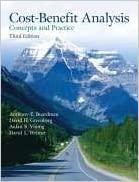7) The current ETT The current FUTA tax rate is 0.6%, and the SUTA tax rate is 5.49 Both are applied to the et $7,000 of an employee's pay. Assume that an employee cared total wages of $2,900 in the current period and had cumulative pay for prior periods of $5,800. What is the amount of unemployment taxes the employer must pay on this employee's wages for the current period? A) $420.00 B) $348.00 C) $72.00 D) $174.00. E) $0.00 8) An employee earned $100,000 working for an emplover in the current year. The current role for FICA Social Security is 6.2% payable on camines un to $128.400 maximum per year and the rate for FICA Medicare 1.45% of all earings. The employer's total FICA payroll tax for this employee is A) $7,650. B) 89,830. C) $879, D) $8.950. E) SO, since the FICA tax is only deducted from an employee's pay. 9) On May 22, Jarrett Company borrows $7,500 from Fairmont Financing, signing a 90-day, 8% $7,500 note. What is the journal entry needed to record the transaction by Jarrett Company? A) Debit Cash $7,500; credit Accounts Payable $7,500 B) Debit Accounts Payable $7,500, credit Notes Payable $7,500. C) Debit Cash $7,650, credit Notes Payable $7,650. D) Debit Cash $7,500; credit Notes Payable $7,500. E) Debit Notes Receivable $7,500; credit Cash $7,500. 10) A bond traded at 102% means that: A) The bond pays 2.5% interest. B) The bond traded at 102.5% of its par value. C) The market rate of interest is 2.5%. D) The bonds were retired at $1,025 each. 11) An advantage of bonds is: A) Bonds do not affect owner control. B) Bonds require payment of par value at maturity. C) Bonds can decrease return on equity. D) Bond payments can be burdensome when income and cash flow are low. E) Bonds require payment of periodic interest. 12) A bondholder that owns a $1,000, 10%, 10-year bond has: A) Ownership rights in the issuing company. B) The right to receive $10 semiannually until maturity. C) The right to receive $1,000 at maturity. D) The right to receive $10,000 at maturity. E) The right to receive dividends of $1,000 per year







